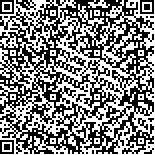| 本文已被:浏览 2025次 下载 2098次 |

码上扫一扫! |
|
|
| 云龙石斑鱼胃排空特征和摄食消化特性研究 |
|
高云红1,2, 景琦琦3,2, 黄滨3,2, 关长涛3,2, 张佳伟4, 李文升4, 翟介明4, 贾玉东3,2
|
|
1.上海海洋大学水产与生命学院 上海 201306;2.中国水产科学研究院黄海水产研究所 青岛 266071;3.青岛国家科学与技术试点国家实验室海洋渔业科学与食物产出过程功能实验室 青岛 266071;4.莱州明波水产有限公司 莱州 261400
|
|
| 摘要: |
| 为阐明养殖新品种云龙石斑鱼(Epinephelus moara ♀ × E. lanceolatus ♂ )摄食胃排空特征和消化酶活性变化规律,本研究检测了体重为(680.35±39.84) g云龙石斑鱼摄食后胃内容物百分比,比较了线性模型、平方根模型和立方模型对胃排空曲线的拟合程度,分析了云龙石斑鱼摄食后血清中葡萄糖、皮质醇含量和肝脏消化酶活性变化,并对胃排空率与消化酶进行了相关性分析。结果发现,云龙石斑鱼摄食后,胃排空率呈典型的先慢后快再慢的消化类型。3种模型均能拟合云龙石斑鱼的胃排空数据,其中,立方模型拟合效果最佳。由立方模型可知,云龙石斑鱼胃80%排空(食欲基本恢复)时间为9.5 h,100%排空(食欲完全恢复)约为14.8 h。血清中葡萄糖、皮质醇含量及肝脏中消化酶(淀粉酶、糜蛋白酶和脂肪酶)活性在摄食胃排空过程中均呈先升高后降低的趋势。摄食后,血清中皮质醇、葡萄糖含量和肝脏内消化酶活性逐渐升高,0~3 h上升速率较慢,3~6 h内呈急剧上升的变化趋势,且在摄食后6 h,血清中皮质醇、葡萄糖含量和肝脏内消化酶活性达到最高(P<0.05),之后呈显著下降趋势,云龙石斑鱼瞬时排空速率与消化酶活性呈正相关(P<0.05)。综上,基于云龙石斑鱼胃排空特征和摄食消化特性,结合生产实践,在食欲基本恢复后开始投喂,投喂间隔为10 h左右,每日投喂2次,效果最佳。 |
| 关键词: 云龙石斑鱼 胃排空率 数学模型 皮质醇 葡萄糖 消化酶 |
| DOI:10.19663/j.issn2095-9869.20191216001 |
| 分类号: |
| 基金项目: |
|
| Characteristics of gastric evacuation and feeding digestion in “Yunlong” groupers (Epinephelus moara ♀ × E. lanceolatus ♂) |
|
GAO Yunhong1,2, JING Qiqi3,2, HUANG Bin3,2, GUAN Changtao3,2, ZHANG Jiawei4, LI Wensheng4, ZHAI Jieming4, JIA Yudong3,2
|
|
1.College of Fisheries and Life Science, Shanghai Ocean University, Shanghai 201306;2.Yellow Sea Fisheries Research Institute, Chinese Academy of Fishery Sciences, Qingdao 266071;3.Laboratory for Marine Fisheries Science and Food Production Processes, Pilot National Laboratory for Marine Science and Technology (Qingdao), Qingdao 266071;4.Mingbo Aquatic Co. Ltd., Laizhou 261400
|
| Abstract: |
| In the present study, the gastric evacuation rates, hepatic and intestinal digestive enzyme activities, and serum glucose and cortisol concentrations in “Yunlong” groupers (Epinephelus moara ♀ × E. lanceolatus ♂: body weight (680.35±39.84) g) were evaluated to illustrate the characteristics of gastric evacuation and digestive enzyme activity. In addition, the degree of fitting of the gastric emptying curve was analyzed using a linear model, square root model, and cubic root model. The gastric evacuation rates of “Yunlong” groupers exhibited a typical curve digestive pattern (slow-fast-slow) during the gastric evacuation process. All the three mathematical models could fit the gastric evacuation data of “Yunlong” groupers; however, the cubic model obtained the optimal result. According to the cubic model, 80% (appetite basic recovery) and 100% (complete recovery of appetite) gastric emptying occurred at feeding after 9.5 hours and 14.8 hours in “Yunlong” groupers, respectively. The hepatic and intestinal digestive enzyme (amylase, chymotrypsin, and lipase) activities increased significantly from 0 to 6 h, and then decreased from 9 to 24 h during the gastric evacuation process in “Yunlong” groupers. The concentrations of serum glucose and cortisol corresponded with digestive enzyme activities during gastric emptying in “Yunlong” groupers. In addition, serum cortisol and glucose concentrations and digestive enzyme activity increased slowly from 0 h to 3 h, then increased significantly from 3 h to 6 h (P<0.05), with the highest values obtained at 6 h, and then decreased significantly until gastric evacuation was completed (P<0.05). In addition, the gastric evacuation rate was positively correlated with digestive enzyme activity during gastric evacuation in “Yunlong” groupers. In conclusion, the results reveal that the optimal interval feeding recommended is at 10 h and twice per day, based on the gastric evacuation rate and feeding digestion characteristics of “Yunlong” groupers in captivity. |
| Key words: “Yunlong” groupers (Epinephelus moara ♀ × E. lanceolatus ♂) Gastric evacuation rate Mathematical model Cortisol Glucose Digestive enzyme |